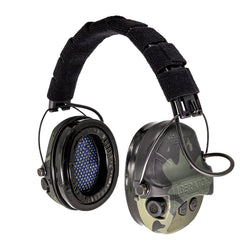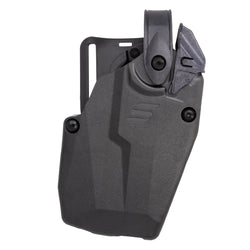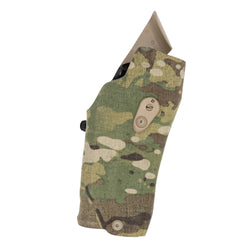Knowing when to press the trigger is critical to successful firearm deployment for law enforcement and defensive shooters. That decision is shaped by the information available at the moment, much of which comes directly from the firearm itself, through its sights, optic, or even the frame or slide. Those inputs are known as “confirmation levels” or “acceptable sight pictures.”

In the video below, Paul Costa of Achilles Heel Tactical shows us a Confirmation Level Drill. It’s designed to acclimate us to these levels and train us to become comfortable with them as befits our skill level.
Paul prefers the term “confirmation level” to “acceptable sight picture” because confirmation levels themselves are more detailed and can be specifically applied to developing our shooting skills. The Confirmation Level Drill emerged from his observation that students in courses are “over confirming,” wasting precious time before engaging due to lack of trust.
This drill can incorporate time as a reference, but its primary purpose is to demonstrate the visual cues of each confirmation level so shooters can train to be competent with it and confident enough to trust it. The goal is to reduce the shooter’s reliance on gun-generated information to the bare minimum, while developing the necessary skill for the standard of marksmanship at speed.
The more a shooter can engage accountably on minimal information, the more confident and proficient that shooter will become in extremely time-sensitive engagements.

Paul presents the Confirmation Level Drill in the context of law enforcement, which is appropriate. But civilian defensive shooters and concealed carriers can benefit enormously from this drill and the awareness it brings. Paul also notes the drill’s benefit to competition shooters.
Basic Confirmation Levels
Paul identifies basic confirmation levels based on visual cues using his red dot optic or front sight:
- A stopped dot or front sight, representing maximum information from the gun.
- A “streaking dot” or sight moving into the desired hit zone.
- A “flash of color” splashing into the hit zone.
- Non-traditional sighting methods with no sight signature at all, but based on the gun frame or slide, or perhaps the optic housing, pointing into the hit zone.
Each visual cue represents a certain amount of information that grants your brain permission to press the trigger. That permission is based on your skill level as determined by drills such as this one.
Paul stresses that lower conformation levels are not permission to be inaccurate. Those lower confirmation levels become available only as the shooter demonstrates the skill to hit accurately using them. Only full accountability for every shot is acceptable at each level.

Running the Confirmation Level Drill properly will reveal how much information the shooter needs for a given shot. Shooters should always be working toward shooting with the least amount of information while maintaining 100% accountability. That work is the only way to consistently increase skill, confidence, and performance.
Running the Confirmation Level Drill
Paul re-emphasizes that time should not be tied to this drill. It can be used as a reference, but timing the drill takes away from the primary task of developing skill and confidence. Learning to confidently press the trigger using different visual cues automatically accounts for time. It’s the skill, not the timer. Paul only uses the timer to initiate his draw. Worrying about time reduces focus on the visual cues.
The skills imparted by the Confirmation Level Drill can translate to real-world scenarios, though Paul notes that they will not account for every factor in that environment. They are merely one skill set to use in a bad situation that will require many skills.

Understand that varying confirmation levels are introduced into a drill or scenario in two forms: the gun or sight entering the desired hit zone, and reacquiring the sights in a double or multiple shot string. A stopped dot can quickly become a streak after the initial shot.
Paul begins at five yards from his target, drawing to a stopped dot and shooting based on that information. He then progresses through the other visual cues, evaluating his accountability. His marksmanship is very good, but less accomplished shooters will undoubtedly see their performance degrade along with the visual cues. Only practice will improve that.
As performance reaches full accountability, the distance should be increased. Of course, difficulty increases with distance, but that’s how skills and confidence develop
The process is quite nuanced and cannot be fully explored in a commentary such as this. Watch the video for Paul’s full explanations and demonstrations. It’s worth your time.

Final Thoughts on the Confirmation Level Drill
Training the fundamentals is essential to developing any skill. Shooters often practice such things as grip, trigger control, and stance. As we should. But perception and processing of information is a crucial skill in a law enforcement or defensive scenario. Effective shooters train their minds and senses as well as their muscle memories.
Paul Costa’s Confirmation Level Drill does that. It identifies a shooter’s skill level at interpreting visual cues and teaches how to improve those skills. It also trains the brain to shoot with lower levels of information, which, in turn, imparts confidence in those skills.
Real-world scenarios rarely allow the perfect stance, grip, and sight picture. Training for those degraded conditions increases the chance of countering them effectively. Knowing one’s needed information level helps navigate uncertain circumstances. This drill will help determine and develop that knowledge.









